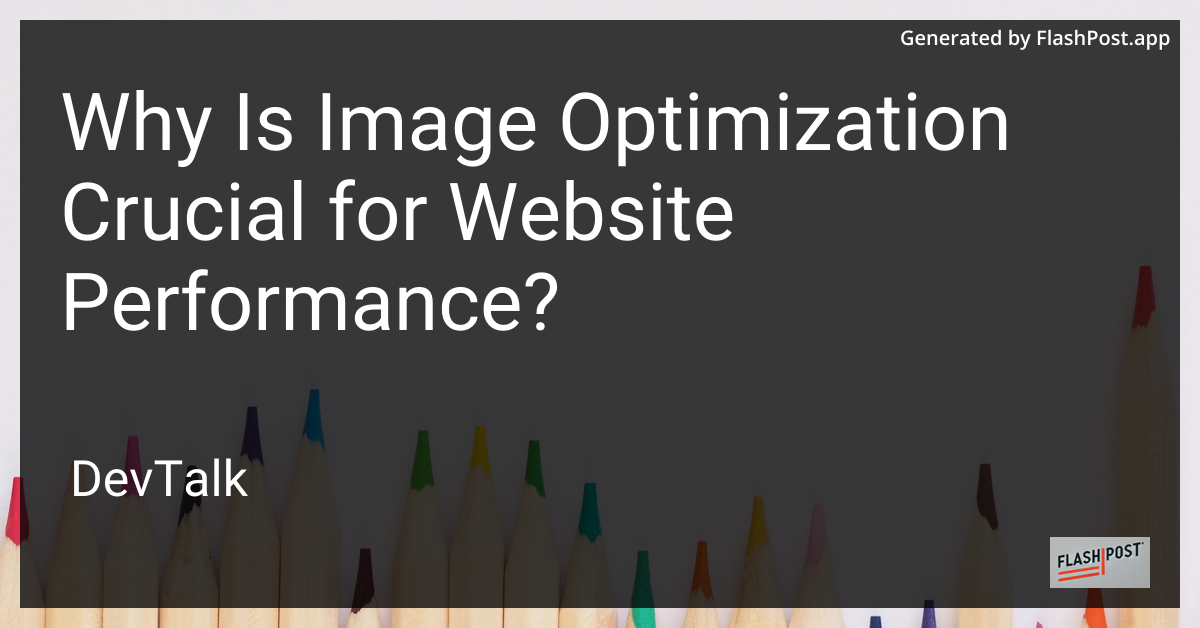Why Is Image Optimization Crucial for Website Performance?

Why is Image Optimization Crucial for Website Performance?
In today's fast-paced digital landscape, website performance plays a pivotal role in user experience, search engine rankings, and conversion rates.
Among the various elements that contribute to a website's performance, image optimization stands out as a crucial factor. Let's delve into why image optimization is essential and how it impacts your website's overall efficiency.
1. Improved Loading Speeds
Images can constitute a significant portion of a webpage's total size. Large image files can drastically slow down page loading times, leading to poor user experiences. Optimizing images reduces file size without sacrificing quality, thereby accelerating load times. This not only enhances user satisfaction but also reduces bounce rates, as visitors are less likely to leave a site that loads quickly.
2. Enhanced SEO Performance
Search engines like Google consider page speed as a ranking factor. Websites with optimized images load faster and therefore stand a better chance of achieving higher rankings in search results. Image optimization also involves using descriptive alt tags and file names, which can improve indexation and increase visibility in image search results.
3. Reduced Bandwidth and Storage Costs
Efficient image optimization contributes to lowering bandwidth consumption. When users access a page, smaller image files mean less data is transferred, which can lead to reduced costs for website hosting. Additionally, optimized images require less server storage space, contributing to overall cost-efficiency.
4. Better Mobile Experience
With a significant portion of web traffic coming from mobile devices, ensuring a responsive and fast loading site is paramount. Mobile users are often faced with limited bandwidth and slower connectivity. Image optimization ensures that your website delivers an optimal experience across various devices and network conditions.
5. Improved Conversion Rates
Slow loading times can frustrate users, causing them to abandon your site. By ensuring fast-loading pages through image optimization, you can keep visitors engaged and more likely to convert, whether that means signing up for a newsletter, making a purchase, or filling out a contact form.
Tools and Techniques for Image Optimization
- Compression tools like TinyPNG and JPEGmini help in reducing image sizes without compromising quality.
- Responsive images assist in serving different image sizes based on device capabilities.
- Lazy loading defers the loading of off-screen images, further improving page load times.
Further Reading
- Explore how to integrate SEO with image optimization in CodeIgniter by visiting this guide on website optimization CodeIgniter.
- For Magento users, check out tips on Magento website optimization.
- Learn various website optimization techniques to enhance performance.
- Discover the nuances of website optimization for different platforms.
- Understand more about achieving efficient performance with website optimization in Laravel.
By making image optimization a cornerstone of your website performance strategy, you can ensure a faster, more user-friendly experience that supports robust SEO efforts and drives business success.
This article highlights the necessity of image optimization for enhancing website performance, providing substantial benefits in loading speed, SEO, cost efficiency, mobile usability, and conversion rates. It also links to resources that delve deeper into related optimization techniques.